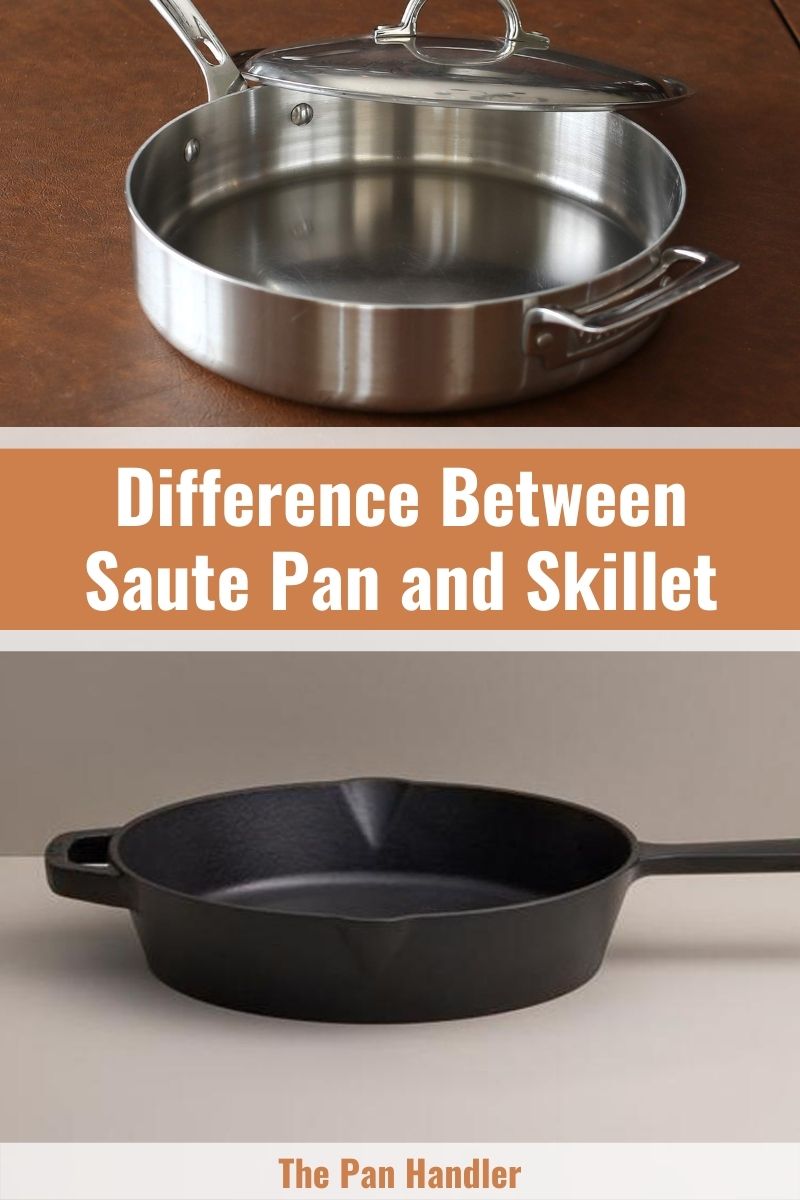The sauté pan and skillet may seem similar from far away, but they have different capabilities. This article will tell you the differences and similarities between the sauté pan versus skillet.
What is Sauté Pan?
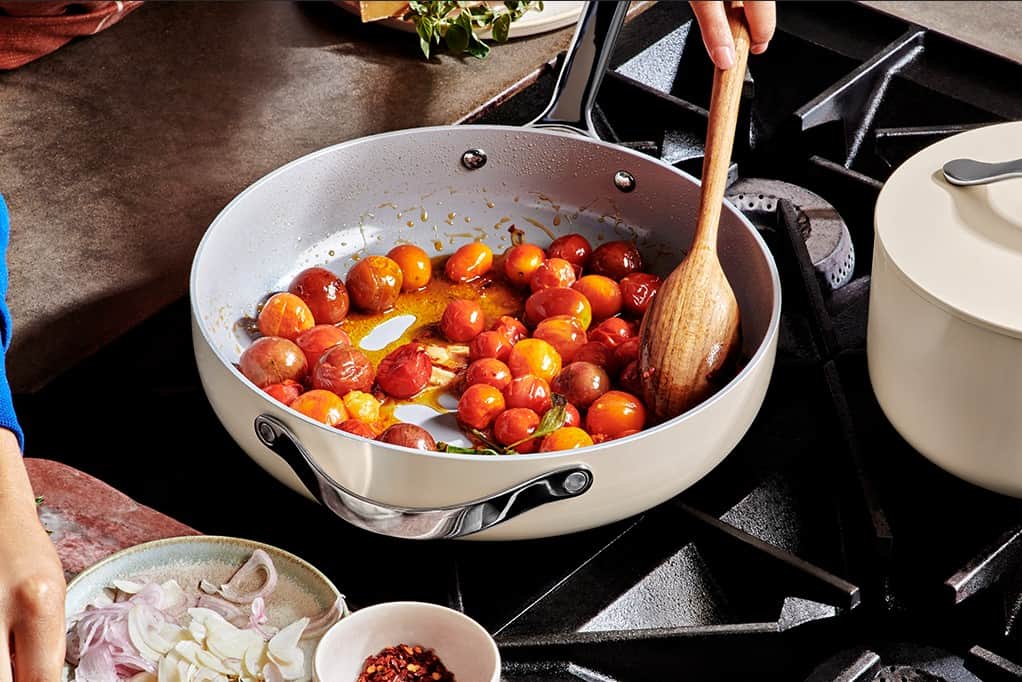
As the name implies, sauté pans are primarily used for sautéing. Sautéing is a cooking method where food is cooked on high heat with a small amount of oil or fat. Sauté pans are known for their wide and even surface area, perfect for evenly cooking the food.
The sauté pan is a cross between a frying pan and a saucepan. Although sauteing may be one of the primary functions of the sauté pan, it can be utilized in many ways.
Since it has some of the features of a saucepan, sauté pans are perfect for cooking saucy dishes. The straight edges keep the moisture on the pan, resulting in a saucy dish with very rich flavors.
Sauté pans are commonly made with stainless steel clad with a non-stick coating. The coating can be either enameled or anodized aluminum. The pan is made to be lightweight for easier flipping and tossing while cooking.
What is Skillet Pan?
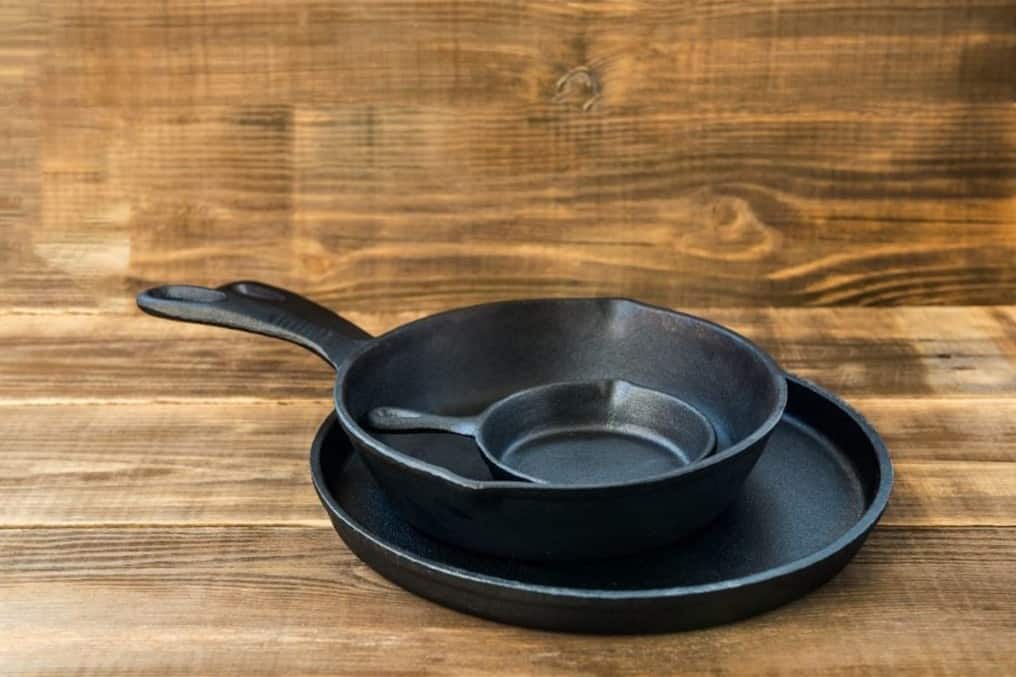
The skillet pan, also known as the frying pan, is one of the most popular types of cookware. Skillets can come in many materials, such as cast iron and non-stick.
You can use the skillet in many cooking methods such as searing, baking, and frying. It’s regarded as the most versatile and widely used cookware.
Differences Between Sauté Pans and Skillet Pans
Sauté pans and skillet pans might appear similar at first, but they have their differences and similarities, such as:
Shape
The most notable difference between the sauté and skillet pans is their shape. Sauté pans feature an even wall and wide surface, while skillets have a narrower bottom.
The even body of the sauté pan makes it easier to cook evenly and make sauces, while the sloped walls of skillets are perfect for searing.
Volume
Since the sauté pan has straight walls, it has more volume. You can put a bit more ingredients and have more room to toss the food around than a skillet.
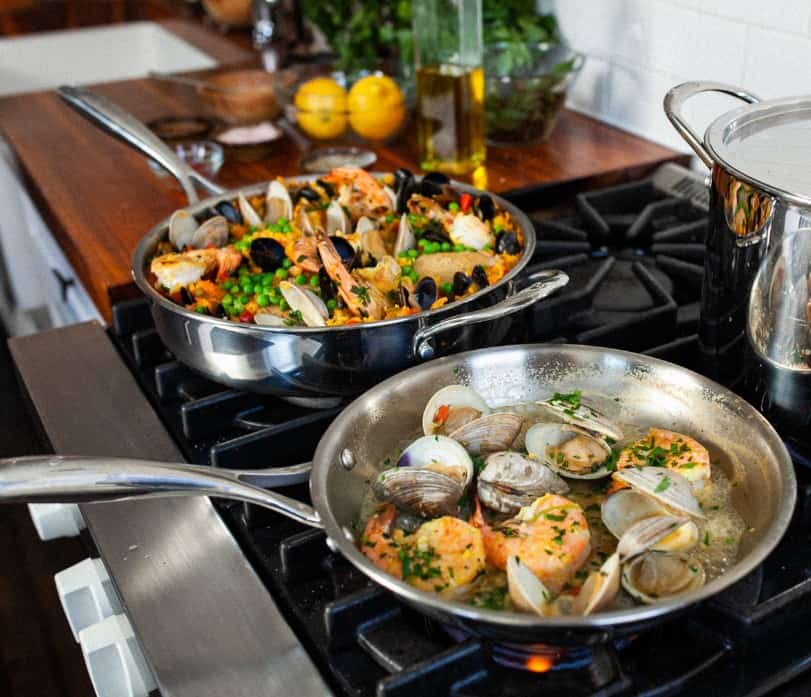
Materials
Although the materials used in skillet and sauté pans are interchangeable, there are differences between popular materials used to make these pans. The different materials give the pans the features needed for a better cooking process.
Sauté pans are commonly created with an anodized aluminum coating clad with a stainless-steel core. These materials are incredible at creating a non-stick surface from the anodized aluminum and providing even stainless-steel cooking.
Sauté pans require excellent heat conduction for better browning of food. The even heat distribution also removes hot spots resulting in equally cooked food and less burning.
Next, let’s talk about the skillet pans. Skillet pans primarily come in two different types: non-stick and cast-iron.
Non-stick is the more common type of skillet pan these days. It’s very convenient, perfect for the busy schedule we have these days. The non-stick coating is mainly made with Teflon, but the rise of anodized and enamel coating has risen these past few years.
The other type of skillet pan is cast iron. Cast iron is one of the oldest types of cookware, known for its durability and long life. If you give your cast iron pans proper maintenance and care, they could last a lifetime.
Function
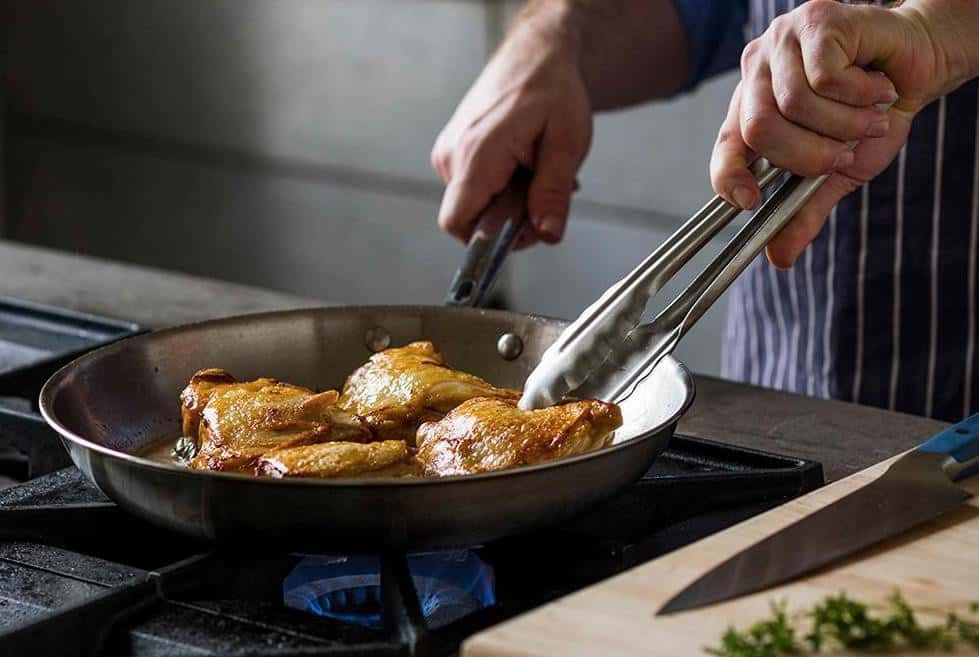
Although there are cooking methods that you can use both pans to do, they both have their specialties. Here are some cooking processes and which cookware is best suited for it.
- Stirring – When it comes to stir-frying, sauté pans have the upper hand. The wider surface and bigger handle make the process of stir-frying much easier. You can also put in larger amounts of food in a sauté pan due to its enormous volume, perfect for tossing and combining the ingredients in the pan.
- Searing – It’s no secret that skillet pans are much more capable than sauté pans when it comes to searing. This is especially true with cast iron skillets. The higher heat induction can brown and crisp the food while keeping the inner parts juicy and flavorful. This cooking method is perfect for steaks and fish.
- Braising – You can’t go wrong with the sauté pan when it comes to braising. Since the sides of the sauté pan are straight, the sauce evaporates much slower, letting the flavors seep more evenly into your food. The walls trap the sauce from evaporating and let it get inside the meat and ingredients resulting in a more intense and flavorful dish.
- Cooking Sauce – When cooking sauces and glazes, keeping the moisture and controlling the temperature are essential. Sauté pans is perfect for cooking sauces and glazes.
- Deep-Frying – When it comes to deep-frying, they can both be used the same. Both pans have a deep wall compared to their counterparts. Although, the sauté pan has more advantages compared to frying pans. The straight-sided walls of the pan contain the oil and help avoid splatters. On the other hand, skillets are better for flipping shallow frying. The sloped side grants you better access and lets you flip the food a lot smoother.
- Baking – When it comes to baking, you should opt for cast iron skillets. Most sauté pans are not oven-safe, while cast iron skillets are. Although, if you want to buy an oven-safe sauté pan, some manufacturers offer them. The only downside is they tend to be more on the expensive side.
How to Know Which One to Buy?
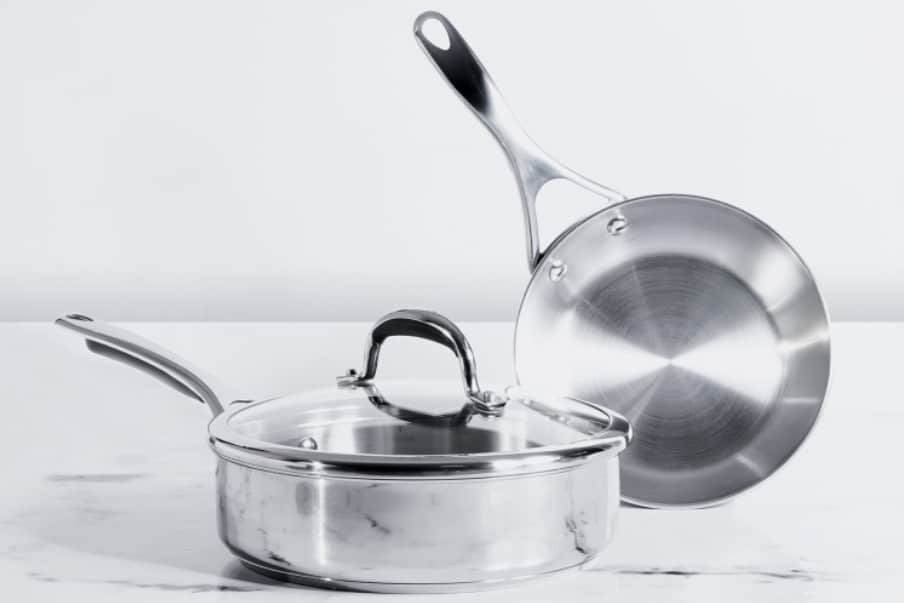
Still confused about which cookware to buy? Don’t worry! We are here to guide you.
Depending on different factors, you need to choose the pan perfect for your cooking needs. We will enlist a couple of features that you might want to consider when choosing which one to buy, such as:
Durability
Cast iron skillets are more durable than anodized aluminum pans when it comes to durability. The only downside with iron skillets is that they have many rules and things to avoid when you are using them.
If you have less time to spend in the kitchen, we recommend sticking with other kinds of skillet such as Teflon or stainless steel. Although, most non-stick pans only last up to five to ten years.
When it comes to the sauté pan, you can opt for anodized aluminum clad with stainless steel. It’s the most durable compared to other types of sauté pans.
Storage Space and Sizes
Are you having a hard time storing your cookware?
Limited kitchen space can be a pain to work around. If this is another factor for you to consider, check out the different sizes of the pan you are planning to try.
Skillets and sauté pans have an average of 10 inches in diameter. Many manufacturers also offer a small 6-inch pan.
Skillets offer a more extensive range in sizes if we are going with the rule of thumb. Mini cast iron skillets can go down to a mere 3-5 inches in diameter. These sizes are great for people who only cook small servings and have limited storage space.
Since sauté pans are better used for saucy dishes, they tend to be larger. They are measured mainly by quarts. A 3-4 quarts sauté pan holds the same as the 10-inch skillet.
If you have more extensive storage or require cookware that can hold larger quantities, the sauté pan might be the one for you.
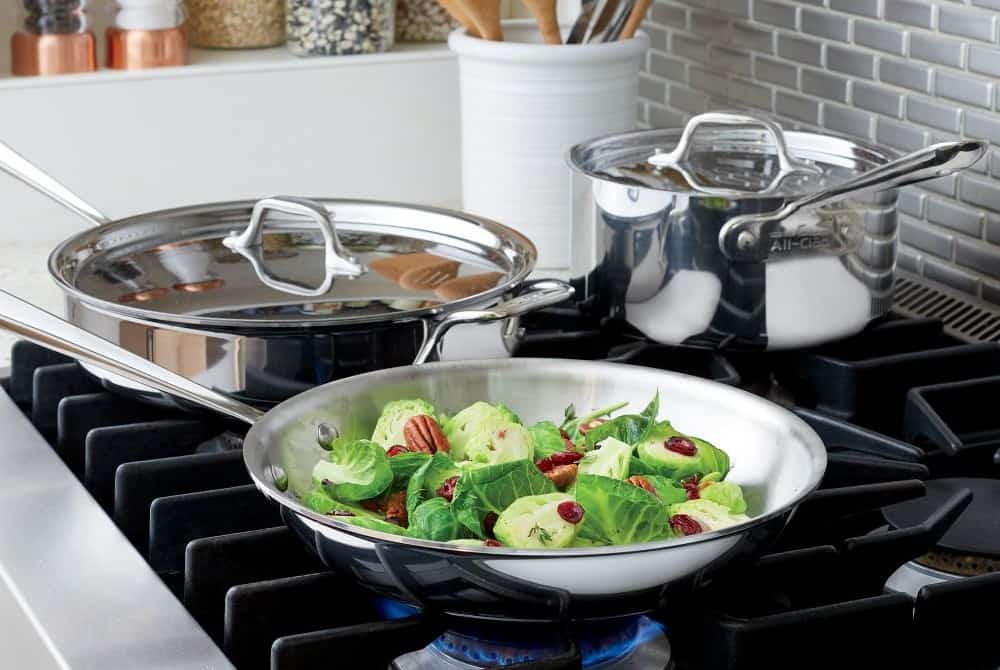
Function
The cookware’s functionality is one of the most significant factors you might consider.
If the number of possible functions is what you are looking for, the sauté pan might be the one for you. Since it’s a cookware that combines the frying pan and saucepan, sauté pans can offer a lot more compared to a skillet.
Sauté pans are very flexible when it comes to cooking methods. You can use it for dishes with sauce, deep-frying, and even searing.
With that said, skillets provide other functions that you may want to consider. Searing and sauteing are much better than with skillets.
The shallow walls provide even cooking and remove a good amount of moisture from the food. If your cooking method requires high heat and even cooking, the skillet is the cookware for you.
Accessibility
Some of these pans may not be accessible in your location. Sauté pans are harder to come by than skillets available in many stores. Skillets also come with a lot more variety than sauté pans.
Fortunately, the internet is here to help us. With online shopping sites, you can choose from various options.
In Conclusion
Sauté pans and skillets are two different cookware. Although they may seem alike, they both have unique functions and advantages. Depending on the factors you want to have in cookware, you can choose which one is for you.
We hope that this article helps you differentiate the sauté pan vs. skillets. If you have more questions about pans and cookware, be sure to comment below.
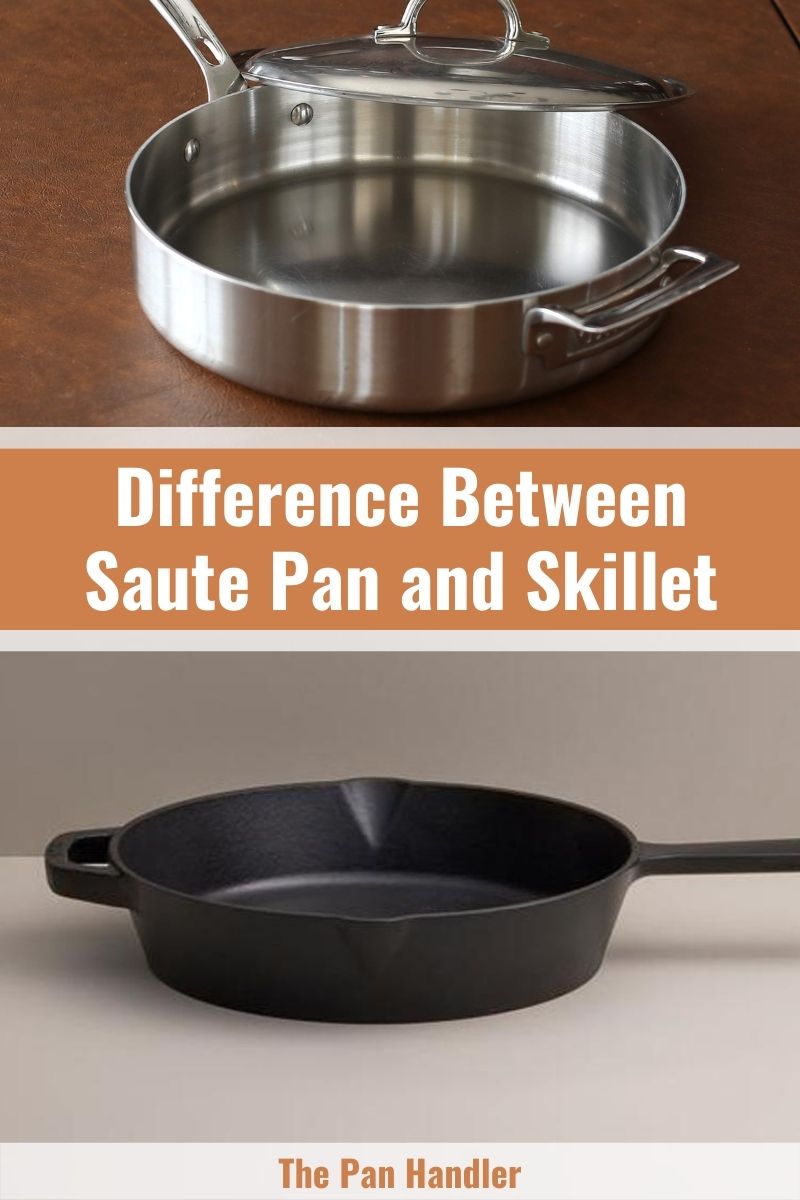

Michael Johnson is the founder of Pan Mastery, Inspired by his blacksmith grandfather’s legacy has a deep appreciation for hand-crafted pots and pans, he provides invaluable guides, reviews, and recipes to enhance your culinary journey.

